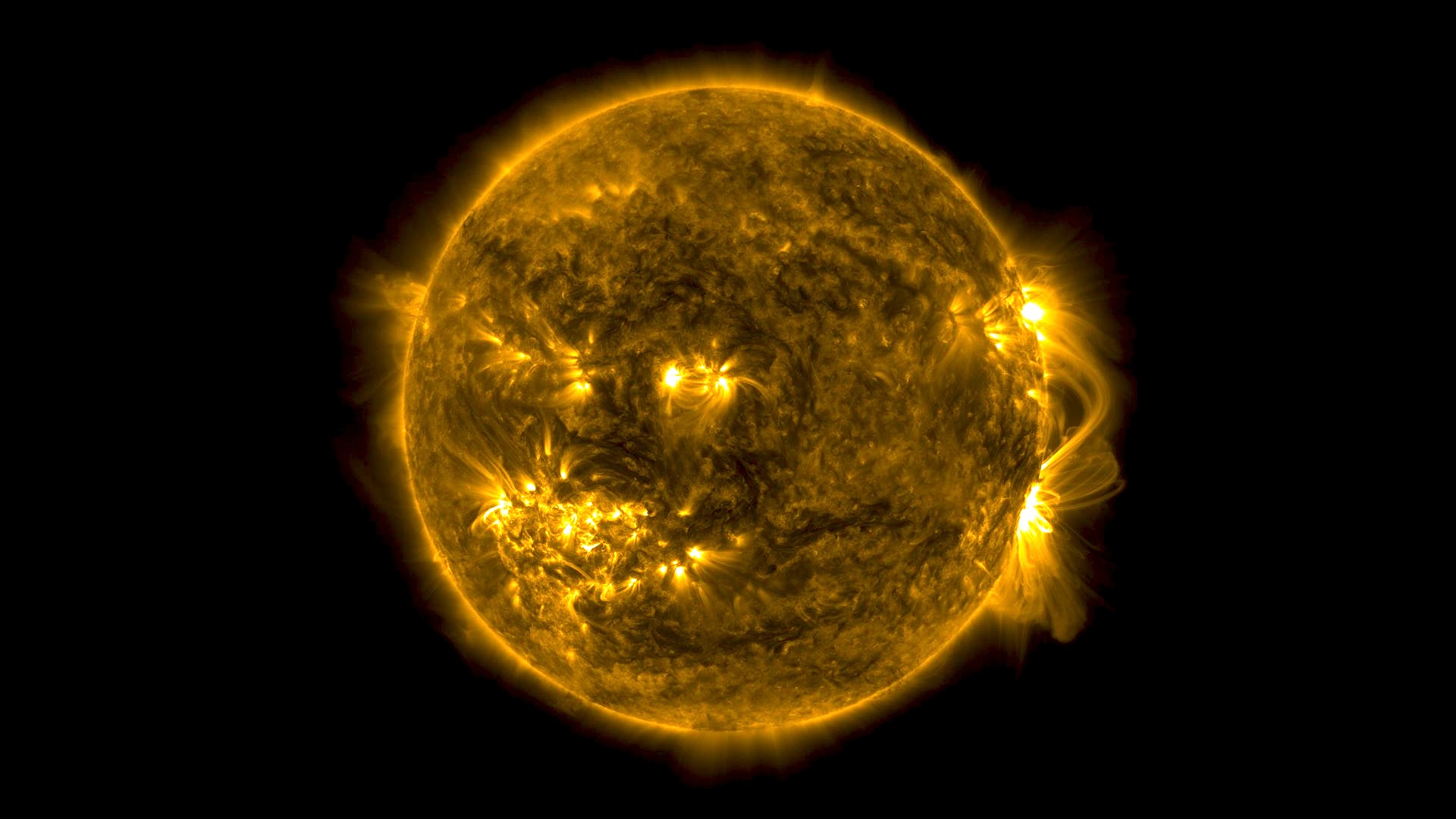Tiny Explosions May Power the Sun's Blazing Corona

The upper reaches of the sun's atmosphere are thousands of times hotter than its surface, and a new study offers a possible reason for that intense heat: countless explosions from the sun, each too small for scientists to detect.
The "surface" of the sun — the photosphere, or visible part of the sun — is about 10,000 degrees Fahrenheit (5,500 degrees Celsius). Strangely, even though it is farther away from the sun's core, the uppermost part of the sun's atmosphere — known as the corona — is much hotter, regularly reaching about 1.8 million to 3.6 million degrees F (1 million to 2 million degrees C) and sometimes reaching up to 72 million degrees F (40 million degrees C), according to NASA.
This mystery of why the sun's corona is so much hotter than its photosphere "is known as the coronal heating problem," study lead author Shin-nosuke Ishikawa, a solar physicist at the Japan Aerospace Exploration Agency, told Space.com. [The Sun Revealed: Photos of the Million-Degree Solar Corona]
One possible explanation for this mystery involves tiny solar flares dubbed "nanoflares" that are too small for current scientific instruments to see given the blinding interference from the rest of the sun, the researchers said.
"We think nanoflares range from a billion to a million times smaller than a regular solar flare," Ishikawa said. That still means a nanoflare typically explodes with about as much energy as 10^19 joules, Ishikawa said, which is equivalent to about 10 billion tons of TNT.
Although nanoflares are fainter and less energetic than regular flares, they would, in theory, happen far more often. This could potentially inject an extraordinary amount of heat into the solar atmosphere, explaining why the corona is so hot, the researchers said.
To investigate the mystery of the sun's corona, Ishikawa's team analyzed X-ray data of solar activity taken by the Focusing Optics X-ray Solar Imager (FOXSI-2) sounding rocket. "Our instruments for X-ray detection from the sun were about 100 times more sensitive than past instruments," Ishikawa said.
Get the Space.com Newsletter
Breaking space news, the latest updates on rocket launches, skywatching events and more!

The researchers discovered very energetic X-rays, a signature of solar plasma heated to more than 18 million degrees F (10 million degrees C), over a region of the sun that had no visible flares. They suggested that this superheated plasma could be generated only by nanoflares.
Next summer, the researchers plan to launch a sounding rocket loaded with upgraded scientific instruments "to detect much more faint X-ray sources," Ishikawa said. They are also working on a satellite that could detect nanoflares, he added. The hope is that such research could help scientists begin to estimate "how many nanoflares there actually are, and how much energy they actually have," Ishikawa said.
The scientists detailed their findings online today (Oct. 9) in the journal Nature Astronomy.
Follow Charles Q. Choi on Twitter @cqchoi. Follow us @Spacedotcom, Facebook and Google+. Original article on Space.com.
Join our Space Forums to keep talking space on the latest missions, night sky and more! And if you have a news tip, correction or comment, let us know at: community@space.com.

Charles Q. Choi is a contributing writer for Space.com and Live Science. He covers all things human origins and astronomy as well as physics, animals and general science topics. Charles has a Master of Arts degree from the University of Missouri-Columbia, School of Journalism and a Bachelor of Arts degree from the University of South Florida. Charles has visited every continent on Earth, drinking rancid yak butter tea in Lhasa, snorkeling with sea lions in the Galapagos and even climbing an iceberg in Antarctica. Visit him at http://www.sciwriter.us









